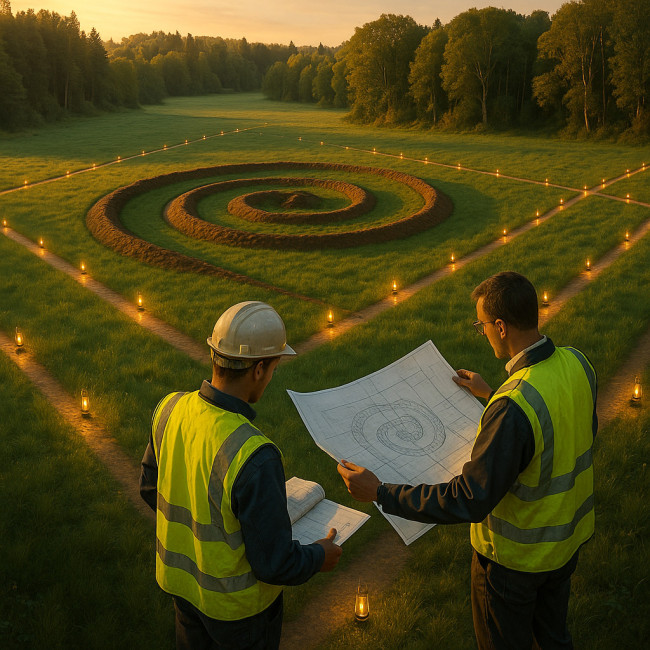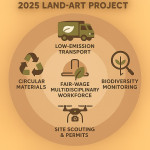Permit pathways: secure legal approvals for temporary landscape artworks
Dreaming of installing a large-scale earthwork, a glowing field of lanterns or a kinetic sculpture that blooms for one month only? Before the first shovel hits the soil, you need a watertight permit pathway. This guide walks you through every regulatory step, budget checkpoint and timeline tweak needed to secure legal approvals for temporary landscape artworks—without delaying opening night.
Why permits are critical for temporary landscape artworks
Even when a work disappears after a season, authorities treat it like any other construction or public event. Permits:
- Protect ecosystems against soil compaction, invasive species or fire risk.
- Mitigate public liability—your insurance depends on documented compliance.
- Safeguard your reputation; an illegal build can jeopardise future grants and grant-ready budgets.
- Unlock sponsorships; brands ask for evidence that every site use is lawful.
Map your regulatory landscape
1. Federal or national regulations
Protected habitats, archaeological zones or coastal setbacks often fall under national jurisdiction. Expect environmental impact statements (EIS) and public consultation periods ranging from 30 to 90 days.
2. Regional and local bylaws
County planners and municipal arts boards govern temporary structures, noise limits and signage. Timelines are tighter—usually two to six weeks—but requirements vary block by block. Early dialogue with a town planner saves redraw fees later.
3. Special-use authorities
Working on a floodplain, railway easement or airport approach path? Niche agencies can veto your design. Factor them into the Gantt chart from day one.
Six-step permit pathway that avoids costly delays
-
Site due diligence (Week 0-2)
Walk the terrain with a local landscape architect. Collect soil tests and topographical data; they feed directly into permit forms and soil-safe material choices. -
Concept alignment meeting (Week 3)
Present mood boards, a risk matrix and preliminary layouts to planning officers. Early feedback trims surprise objections later. -
Environmental & safety studies (Week 3-6)
Commission an ecologist and structural engineer. Their signed reports attach to your master application. -
Application assembly & fees (Week 6-8)
Compile drawings, insurance certificates and neighbour notices. Budget €150–€2 000 depending on region and artwork footprint. -
Public comment window (Week 9-11)
Most councils publish your proposal online. Host a Q&A to pre-empt objections and showcase impact metrics like those in impact-metric case studies. -
Approval & conditions (Week 12-14)
You receive either full approval, conditional approval (e.g., limited visitor numbers) or refusal. Address conditions within ten days to hold your installation slot.
Budget & timeline checkpoints
| Agency Type | Typical Fee (€) | Average Review Time | Fast-track Option |
|---|---|---|---|
| Municipal Planning Department | 150 – 600 | 4 weeks | Yes (48 h) ×2 fee |
| Environmental Protection Authority | 750 – 1 500 | 6 weeks | No |
| Heritage & Archaeology Board | 0 – 800 | 8 weeks | Partial (3 weeks) with pre-study |
| Fire & Safety Office | 90 – 250 | 2 weeks | Yes (72 h) at +30 % |
| Road/Traffic Authority | 200 – 500 | 3 weeks | Yes (5 days) ×1.5 fee |
Include these figures in sponsor decks to justify contingency lines. Need a benchmark for bigger land-art budgets? Review our commissioning cost guide.
Common pitfalls—and how to dodge them
- Ignoring seasonal windows. Many councils halt ground disturbance during nesting season. Cross-check dates with seasonal site-scouting calendars.
- Using non-reversible anchors. Temporary works must leave “no trace”. Specify ballast blocks over concrete footings.
- Late insurance proofs. Planners won't stamp your permit until your liability certificate lists the exact site coordinates.
- Skimping on public access plans. Show clear evacuation routes, accessible paths and on-site signage for inclusive compliance.
Engage stakeholders early

A 20-minute coffee with the park ranger can unlock maintenance insights and even volunteer stewards. Building alliances mirrors the co-design approach detailed in our article on co-designing with landscape architects. Early engagement also reduces the risk of last-minute objections, because stakeholders feel invested in the project. Take time to explain the artistic narrative, the safety measures and the eventual site restoration so they can champion the artwork during public hearings and on social media.
Directory visibility also helps. Update your creator profile on the Artfolio craft & design directory so officials can verify credentials with one click.
Permit documents checklist
- Scaled site plan & elevations (PDF + DWG)
- Material safety data sheets
- Engineer's stability certificate
- Environmental impact memo
- Public liability insurance (minimum €5 M)
- Traffic & crowd-flow plan
- Restoration method statement
- Neighbour notification letters
Timeline optimisation tips
• Submit pre-application queries online—many councils answer within 48 hours.
• Batch print drawings in A1 size; physical plans still speed up internal desk reviews.
• Schedule groundwork immediately after approval; extensions for temporary works are rarely granted.
Ready for a quick knowledge check?
Take the Permit Pathway Mini-Quiz
FAQ
- Do I need a permit for artworks lasting less than 48 hours?
- Many cities exempt installations under 48 hours if they use no ground anchors and attract fewer than 50 visitors at once. Always check local bylaws.
- Can I reuse an existing building permit for a new artwork on the same site?
- No. Permits are project-specific because risk profiles change with each design and material choice.
- Who signs the engineer's certificate—the artist or the fabricator?
- A licensed structural engineer must sign. Some fabricators employ in-house engineers who can issue the document.
- How early should I notify nearby residents?
- Best practice is 14 days before ground works begin, even when bylaws require only seven.
- Is insurance mandatory if the site is on private land?
- Yes. Most councils require evidence that public and worker liabilities are covered, regardless of land ownership.
Take the next step
Secure your approvals, then focus on the creative magic. Download our free permit checklist and start mapping your timeline today.











